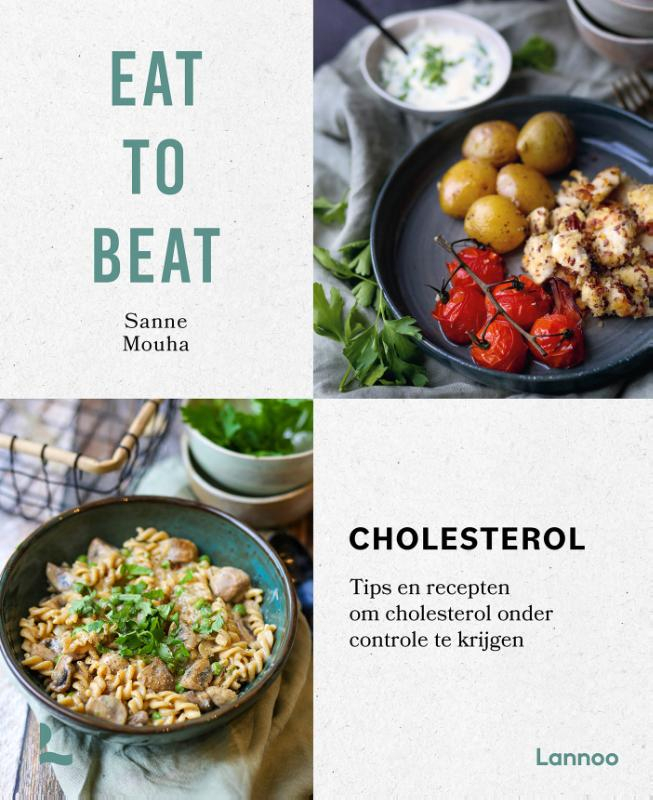
The Eat to Beat series provides answers to questions about nutrition that may be related to that problem for each health problem. earlier published “Eat to Beat Headaches and Migraines” and “Eat to Beat Irritable Bowel Syndrome”. There is now also “Eat to Beat Cholesterol”, written by the Flemish dietitian Sanne Mouha. In Eat to Beat Cholesterol answers the many questions about cholesterol (although it sometimes takes some searching).
Handy reference work
Mouha works as a dietician at the University Hospital in Antwerp and has her own practice in Berchem, Belgium. She already has various books to her name and appears regularly in the media. Eat to Beat Cholesterol is intended for people looking for more clarity about cholesterol. For dieticians, the latest insights into cholesterol may now be a piece of cake, but there is still a lot of clarity among the population about what cholesterol actually is, what those blood values say and whether or not an egg belongs to it. It’s all covered in Eat to Beat Cholesterol. This makes it a useful reference work for the dietician’s practice to tip clients and patients or to refer to during a consultation. The book is divided into 3 parts: a part with theoretical explanation about cholesterol, a practical part to control cholesterol and a recipe part.
Part 1: Cholesterol
The book starts with a clear explanation about cholesterol. Fortunately, cholesterol is immediately taken out of the dark corner and it is emphasized why a healthy portion of cholesterol is very important for the body. The relationship between fat and cholesterol is also clearly explained, including the (Flemish) reference values. It thus provides a useful overview for patients and clients for whom the terms LDL, HDL, TG and the associated blood results are often abracadabra. The reader also receives a clear explanation of how to read labels and how to make smart choices for each product group. Due to Mouha’s smooth pen and the structure of the texts in short blocks with clear frames for tips and facts, the information is clear and easy to read.
Part 2: Beat cholesterol: practical plan
In the practical part, Mouha explains cholesterol-friendly eating in 10 steps. Think of steps like “Be fishy”, with extra explanation about what those labels on fish actually mean, “Go nuts” about mother nature’s healthy sweets and “Plantify” with an explanation about the cholesterol-friendliness of (most) plant-based foods. In this section the reader will also find an example of what a healthy plate of food actually looks like and he will be guided in making cholesterol swaps. Fortunately, the emphasis in these swaps is not only on fat, but also on healthier cholesterol choices in breakfast cereals or pasta, for example. Although the cholesterol swap in which egg in pastries is labeled as a less good choice and the advice to replace it with 1 tablespoon of broken linseed and 3 tablespoons of water raises questions. Fortunately, at the end of this section there is also attention for all facts and fables about cholesterol, and the egg still receives the appropriate positive attention.
Part 3: Recipes
The recipe section, with 30 cholesterol-friendly recipes, takes up about half of the book. Some of the recipes have been compiled with the help of top chefs from restaurant InVINcible in Antwerp. These recipes can be recognized by the more exciting combinations and the mention of InVINcible in the name of the dish. The ingredients sometimes seem a bit exotic, such as nutritional yeast flakes, tahini, quinoa and zest. Fortunately, these unusual ingredients are explained in more detail prior to the recipes, as well as where you can buy them. Some dishes lack explanation about the choice of ingredients. For example, with the pancakes with oat flakes or the “oat breakfast” with oatmeal, an explanation of the special health aspects of oatmeal would have been interesting. When trying to look up whether something is mentioned about the beta-glucans in oatmeal in another place in the book, the book turns out to have no glossary or index. That is very inconvenient for a book that you mainly want to use to look something up. The recipes themselves have been well thought out. They are nicely varied, with meat, fish and chicken as well as vegetarian and plant-based dishes, and feature tasty photos. Surprisingly nice (and surprisingly simple) is the recipe for soup granola, with which you can turn your soup into a healthy meal soup in no time, together with some fresh vegetables.
Conclusion
Eat to Beat Cholesterol is a clear book on a subject that needs a lot of clarity. According to the Belgian Cardiological League, almost 50 percent of Belgians suffer from high cholesterol, compared to more than 23 percent among the Dutch, according to the RIVM. The book is recommended for the many clients and patients for whom cholesterol raises many questions and who want to know how they can get started themselves to get their cholesterol under control. Unfortunately, not all answers can be found quickly due to the lack of a glossary or alphabetical index. You can use the book yourself to clearly substantiate questions about cholesterol during your consultation hours, to debunk myths or to discuss lab values and nutrition labels.
Eat to beat cholesterol. Tips and recipes to get cholesterol under control Sanne Mouha, publisher Lannoo, ISBN 9789401483063, 192 pages, €25.99




